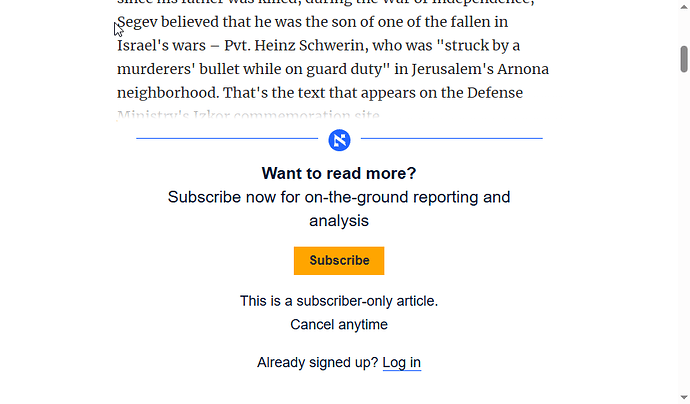It was interesting to listen to because of small things puctuation-wise we take for granted and don’t think about had big literary moments. Even the fact that ancient Greek and Latin didn’t use any spaces between words was a deliberate choice.
Exactly!!! This lady, she gets it!
So, if I’m researching protests, or researching wars, I often need to know how many people were involved, and how they were organized.
I have been muddling through. I often and up beating my head against an impenetrable absence of data. I sometimes end up drowning in a mess of fragmentary and/or contradictory data. I sometimes come up with ways to address this problem, or that, but it’s slow going, leaves me working too much, geting too sick, for too little progress.
I try to look up advice on researching these problems. And find this little gem:
“In many cases, orders of battle have already been published in the sources and need only be photocopied. Otherwise, compile one from the available sources.” (from the 22nd page 1 here: http://npshistory.com/publications/battlefield/battlefield-survey-manual-2016.pdf )
Kevin Zucker offers more specific gaming-oriented advice:
Doing the manpower research is not difficult, provided you have access to a large research library like those found on university campuses and maintained by state governments. Then there are the archives of the nations involved, but you probably don’t have to go to this extreme. … (from Battleplan #5, page 57.)
When I was a student and I did have access to such libraries, it was exceedingly difficult. Napoleonics specialist assumes everything is as clearly-documented as his specialty. Now I don’t have access anyway.
…
facepalm
…
For every difficult or impossible task, there will be someone ready to suggest “it’s easy, just do [the difficult or impossible task].”
…
I really hope there is an easier way to do this, but I don’t know what it is, or where to find advice that will point towards it.
“For many battles you can simply check a relevant history to know the basic numbers. Do not make the mistake of checking two or you will never know them again.”
You’re certainly not the first struggling with this particular issue in the historical fields! And yes, certain folks just have better access to documentation - but of course, they (and we) need to ask about the accuracy of numbers. Official archives, as you know, certainly have a political slant, and might not be accurate, so often, you need to cross check those numbers against other sources… and the further back in time you go, the harder that’s gonna be! What it means to keep accurate records has changed over time.
Hell, I have this problem in the research I do today on events of the past 50 or so years! How many kids were at a particular show, for example, or which bands performed that night - one source will say one thing, while another source might contradict it!
Yep, that’s absolutely correct! ![]()
Keep at it, @MarjaE! It’s good to see enthusiasm not just for the end result of historical study, but the production of history itself!
I’ve found army manuals on order of battle intelligence. These do provide relevant advice.
For example, this here: IS3001 Introduction To Order Of Battle Edition D : The Army Institute For Professional Development : Free Download, Borrow, and Streaming : Internet Archive
Or FM 34-3 here: BITS Special Documents - AMD - Archive of Military Doctrine
The relevant advice seems to be to 1. keep a file on each standard type of unit, and 2. keep a modified copy of that file for every opposing unit in your sector.
I suppose that may work well for military intelligence, but I think that would be even more work, for less gain for historical research.
My 1st concern is that if I do have a complete strength estimate, or a complete list, or even some practical lower and upper bounds, I think that should be a better starting-point. If I can work top-down, I feel like missing info, or misinterpretations, won’t cause as much trouhble as if I’m working bottom-up.
My 2nd concern is that I can spend hours or days trying to track down data on one sub-group or one sub-unit, which won’t usually help me figure out the broader group or higher-echelon unit.
My 3rd concern is that if a few groups overlap, or a unit is renamed, or a unit is merged into another, or different units share similar names, then the bottom-up approach could lead to double-counting.
My 4th concern is that unless I’m dealing with the Roman Army, I’m rarely dealing with any standardized organizations.
Today it’s been 57 years since MLK was assassinated in Memphis…
It takes a minute to load, so be patient.
[ETA]
Justice for the apostrophe!
Why is that such a big deal?
Because before Joan of Arkansas, (whose title character was played by a male actor in drag since Mask and Wig was a male-only ensemble until just three years ago) acoustic recording required vocalists to sing loudly into a megaphone not unlike the cone seen on the iconic Victor label with Nipper the dog listening to “His Master’s Voice.”
It favored operatic singers and vaudeville singers “who could project to the back of the hall,” says Mark Obert-Thorn, the producer and engineer who curated the new 1925: Landmarks from the Dawn of Electrical Recording on the Pristine Classical label. The electrical amplification, he said, “enabled more dynamic range of recording frequencies, music could sound more natural.”
“With electrical recording, you had amplification. You could sing at a lower tone. You could whisper,” explains Obert-Thorn, a lifelong Philadelphian who now lives outside of Detroit, speaking via Zoom.
In fact, the earliest recording made by the new Western Electric system was by Art Gillham, known as “The Whispering Pianist,” for Victor’s rival, New York-based Columbia Records
Innovative technology allowed for more intimate emotional expression from vocalists — from Billie Holiday to Billie Eilish — who seduced the listener, rather than overpowering them.
“It paved the way for crooning, and for the more subtle kind of delivery you heard in Bing Crosby and Frank Sinatra and on to today,” says Obert-Thorn, who added that the new technology had a profound effect on classical music. Instead of singers going into the studio, “[the technology] could go into big halls, it could go into live performances, it could go outside,” he said.
that is totally cool! i love that it was recorded in that manner and that the recording still exists.
how long before it goes on the pyre of “memory hole”?
these things must be preserved.
QAA Podcast: Graham Hancock’s Ancient Apocalypse (E318)
Graham Hancock is a British journalist and author who has gained worldwide fame for his pseudo-archaeological theories. Hancock proposes that an advanced, globally connected civilization existed more than 12,000 years ago and that remnants of their knowledge survived a catastrophic event, informing later cultures around the world.His Netflix series, Ancient Apocalypse, amplifies Hancock’s claims, suggesting that mainstream archaeology has deliberately ignored or suppressed evidence supporting his controversial hypotheses.
As Annie Kelly and Fall of Civilizations podcaster Paul Cooper explain to Travis and Brad on this episode, all of this is a hot load of ahistorical rubbish.
But why does this story have enough appeal for two seasons of a Netflix show in the first place? And why is Kenau Reeves involved with it?
Annie and Paul take a deep dive into Graham Hancock’s work, picking apart the fallacies that sustain it and the questionable characters that promote it.



